With the 2010 launch of the Vito E-CELL, Mercedes-Benz Vans pioneered electric in the LCV business. In 2023, Mercedes-Benz Vans offers fully-electric variants in every segment, from small over midsize to large vans – targeting an EV share of more than 50% by 2030 for both the private and the commercial model portfolio. All newly developed vans will be based on an innovative, modular and scalable electric architecture: VAN.EA, which forms the foundation for the Mercedes-Benz claim to lead in electric drive. All future midsize and large vans will be built on it, whether for commercial use as versatile premium all-rounders or as private luxury vans. VAN.EA-based vehicles will focus on added value for customers and their individual needs. VAN.EA has been developed from scratch as a purpose battery electric vehicle (BEV) and will strengthen the focus on efficiency and performance. The introduction of VAN.EA in 2026 will be an important milestone on the way to achieving the division’s Ambition 2039 goals – a net carbon-neutral new vehicle fleet.
To date, the new Mercedes-Benz eSprinter is the most versatile and efficient Mercedes-Benz eVan. In October 2022, Mercedes-Benz Vans demonstrated its efficiency with a test drive under real-world conditions of an express delivery. The route led from Stuttgart to Munich and back on just one charge. Now, the new eSprinter completed another special test in the U.S. A pre-production vehicle of the new eSprinter equipped with the 113 kWh battery, drove the demanding route from Las Vegas, NV to the Mercedes-Benz Tech Center in Long Beach, CA. This corresponds to 275 miles (443 kilometres) – the eSprinter completed the drive without recharging.
Above and beyond this, commercial van customers will have full access to the all-new Mercedes-Benz High Power Charging network alongside the existing and growing IONITY network. It is planned to expand it to up to 10,000 high-power chargers worldwide by the end of the decade. Furthermore, Mercedes-Benz Vans will offer the digital service Mercedes me Charge, for B2B customers starting with the new eSprinter, giving them access to 300,000 charging points across Europe. Mercedes me Charge is one of the largest public charging networks in Europe and customers will be able to charge their vehicles comfortably and easily.
Mercedes-Benz Vans has already proven its expertise and strong track record in the development of vehicle software and digital extras. Today, the division offers a selection of around 30 digital extras via the Mercedes me app and store and will be rapidly expanding and optimising this selection. Building on this, its digital strategy follows a comprehensive, straightforward, three-layer-approach to create software-enabled revenues. In the first layer, Mercedes-Benz Vans offers vehicle-related functions – for example, tailored navigation for oversized vehicles like camper vans that require special routing to accommodate road restrictions for large vehicles. The second layer consists of customer-specific digital extras, provided by a unique inhouse developed device, the Onboard Logic Unit (OLU), which enables customers to integrate the division’s products into their own specific digital infrastructure. One example is the individual intelligent charging and load management that was developed with and for DPDHL. This digital solution is based on the Onboard Logic Unit which enables the integration of our electric vans in the existing enterprise system of DPDHL in a seamless way. This way DPDHL can realize intelligent charging for their whole fleet. In the future, the third layer will extend Mercedes-Benz Vans’ digital offerings with a selection of commodity services and third-party applications integrated into the operating system MB.OS that will be an integral part of all VAN.EA based vehicles from 2026 onwards.
Mercedes-Benz is currently developing MB.OS as its proprietary operating system, a flexible, modular and service-based chip-to-cloud architecture designed for its B2B-specific software offerings. MB.OS will enable Mercedes-Benz Vans to rapidly expand and optimise its digital extras and services in the future, allowing it to offer even more customised commercial applications for its customers. For the first time, Mercedes-Benz Vans will offer a comprehensive range of new and existing third-party-apps that are relevant for commercial customers and the division’s core industries. The operating system will also serve as the basis for a much faster and far-reaching Over-the-Air (OTA) update functionality than today and as an enabler for the development of automated driving capabilities from SAE Level 2 upwards. Based on MB.OS and its technical capabilities, the division wants to achieve SAE Level 3 for private customers by end of the decade. With the launch of VAN.EA-based vehicles, the company will provide SAE Level 2 capabilities. For the commercial segment SAE Level 4 is planned to be realized, by end of the decade to address the business potential of driverless transportation.
,xPosition=0,yPosition=0.5)


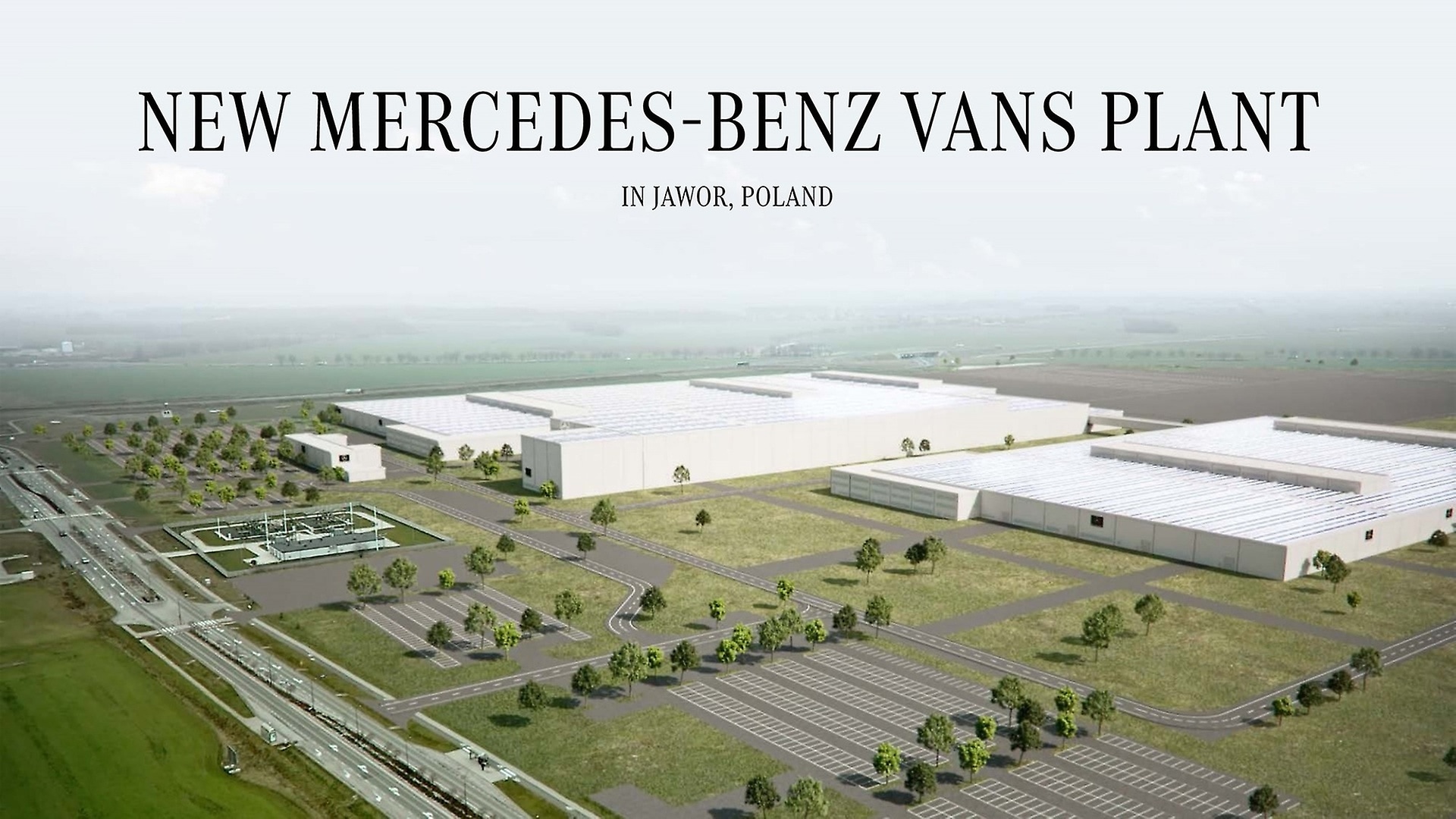
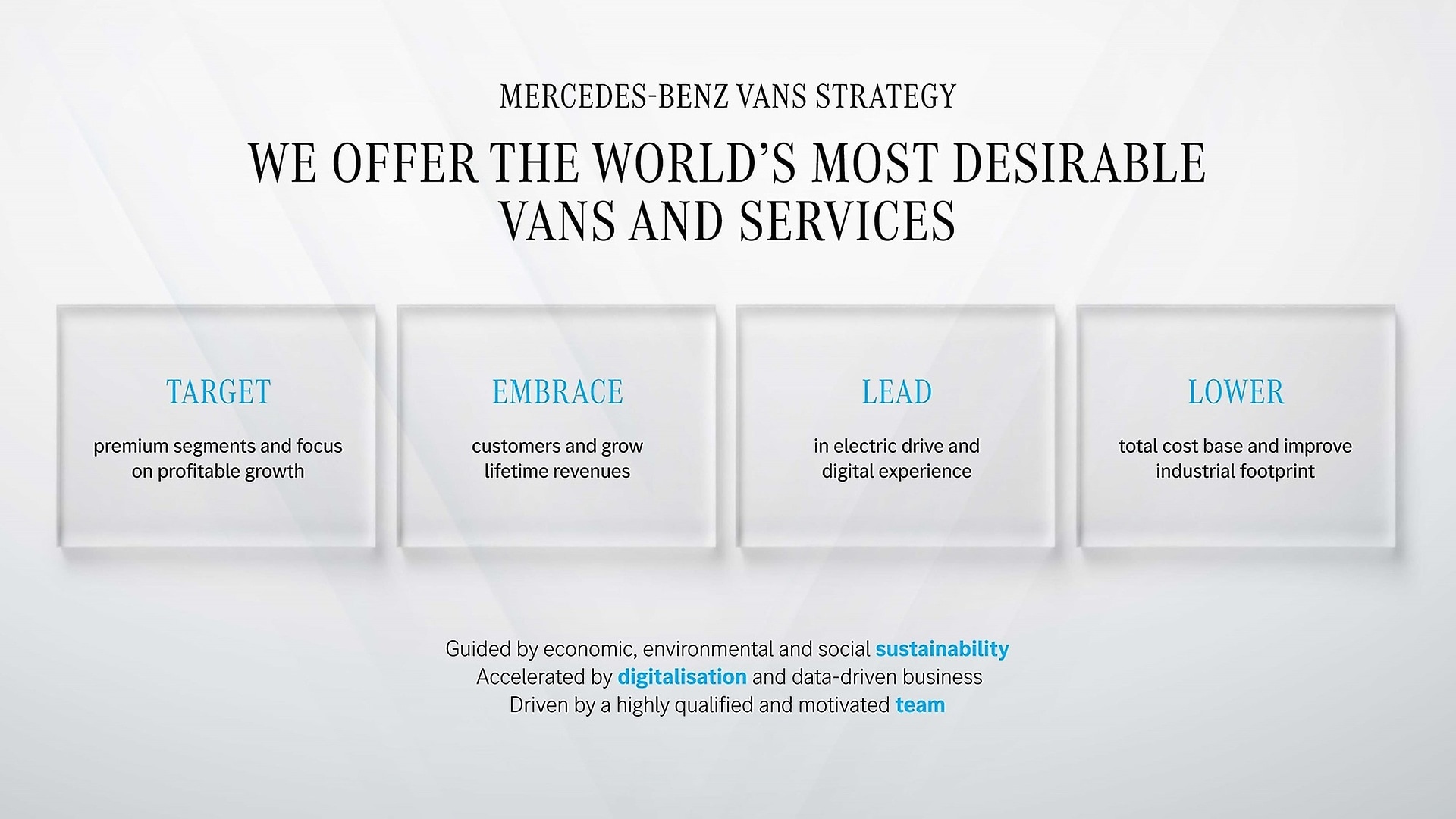
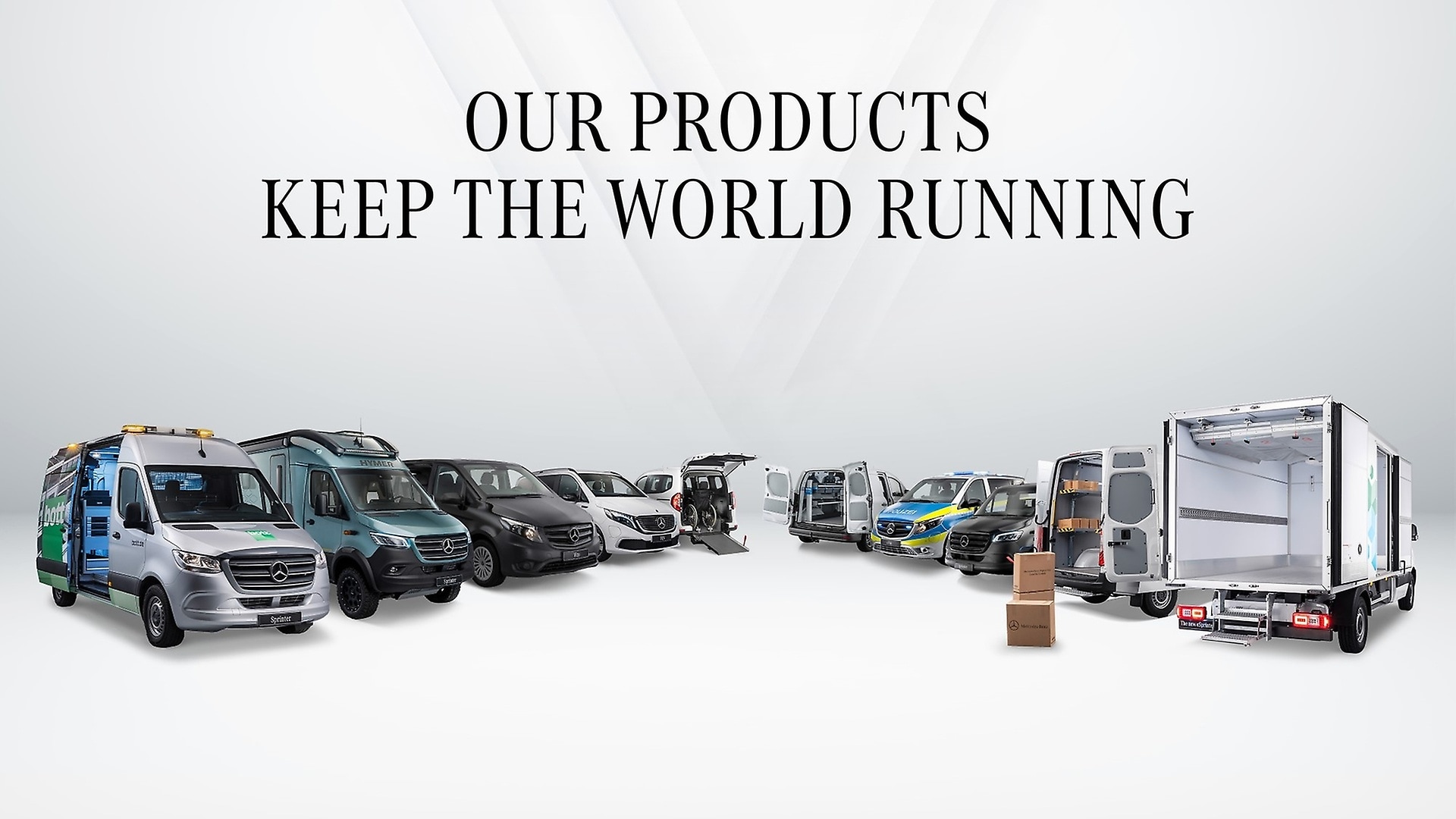
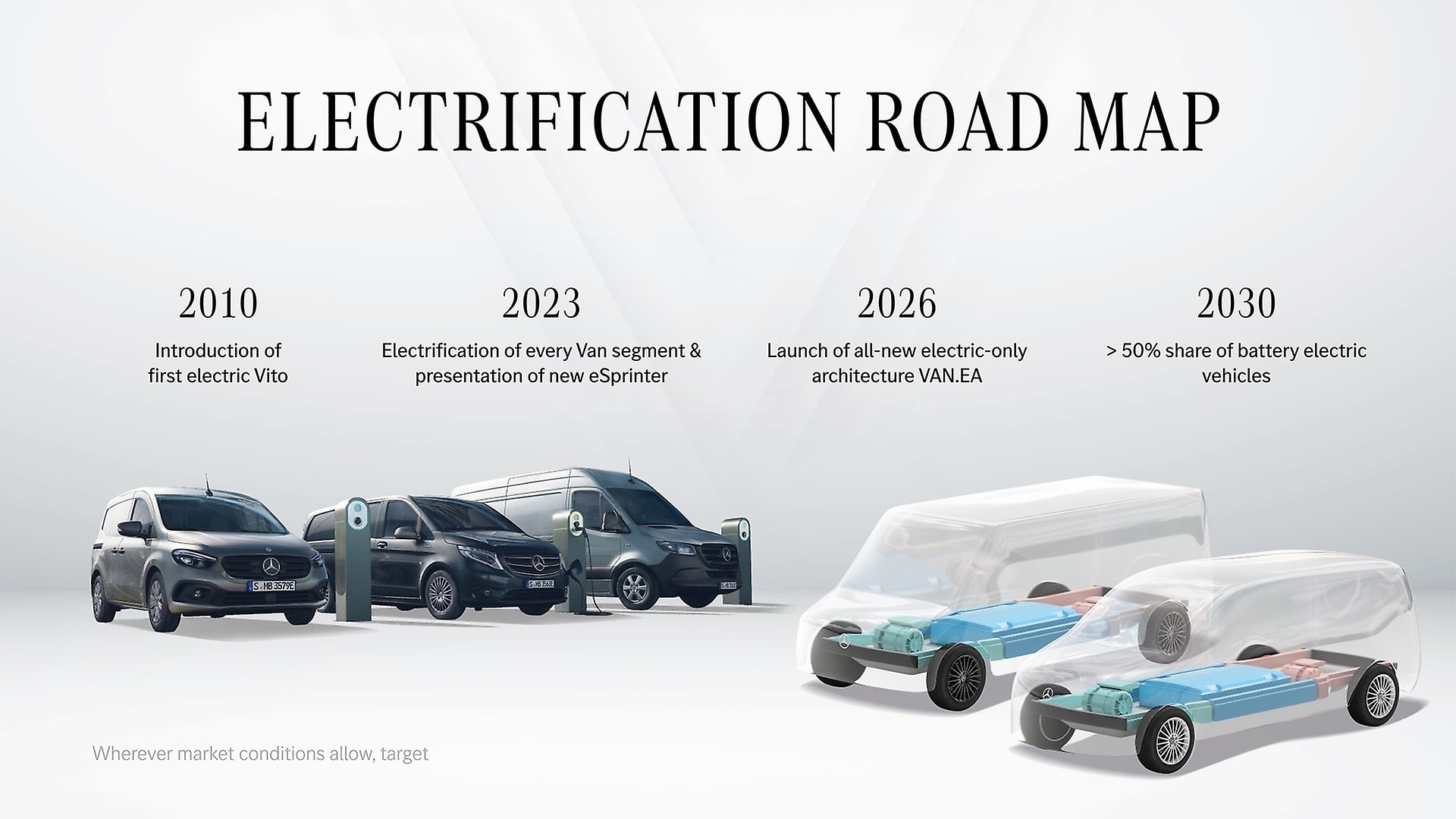
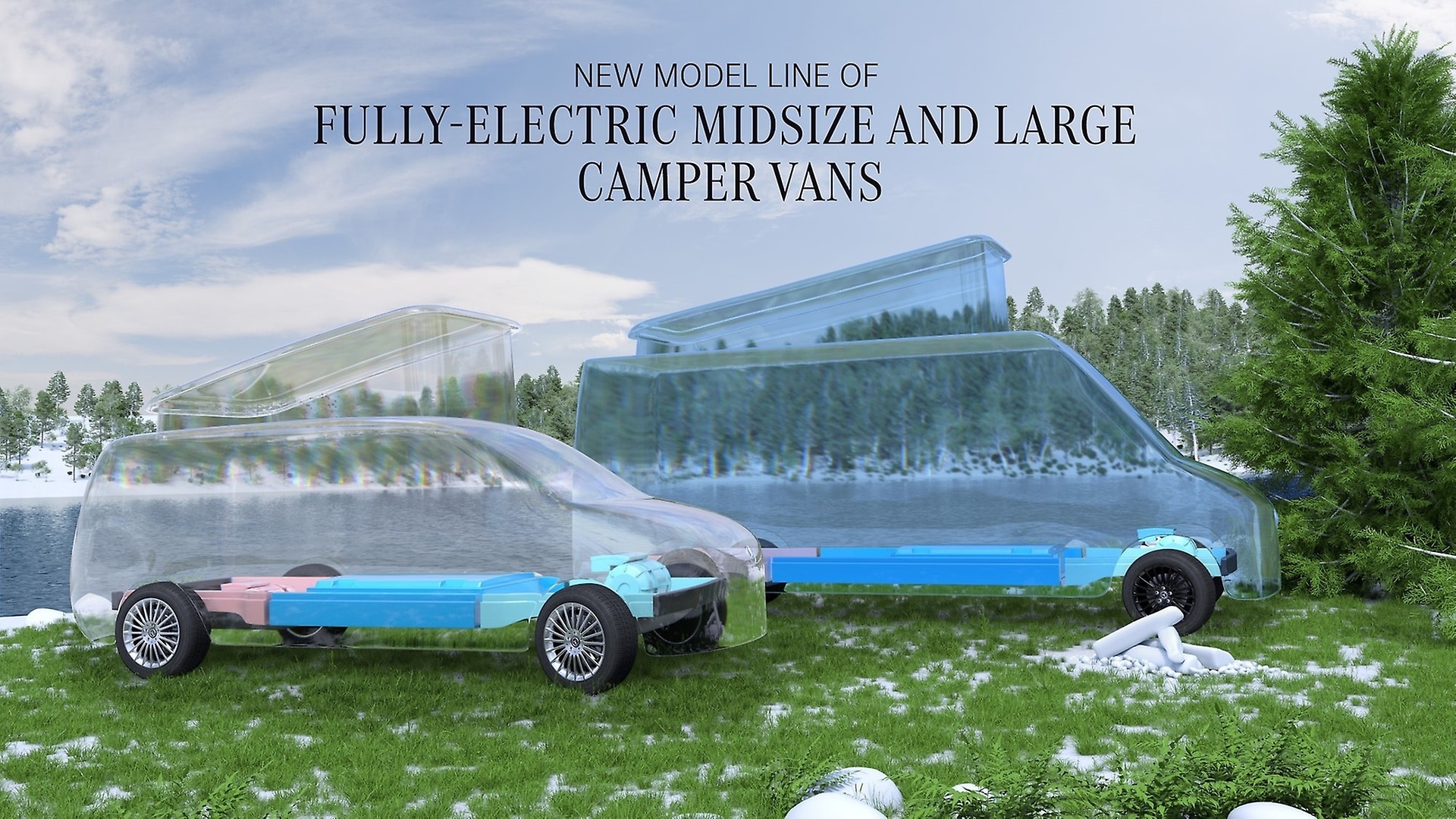

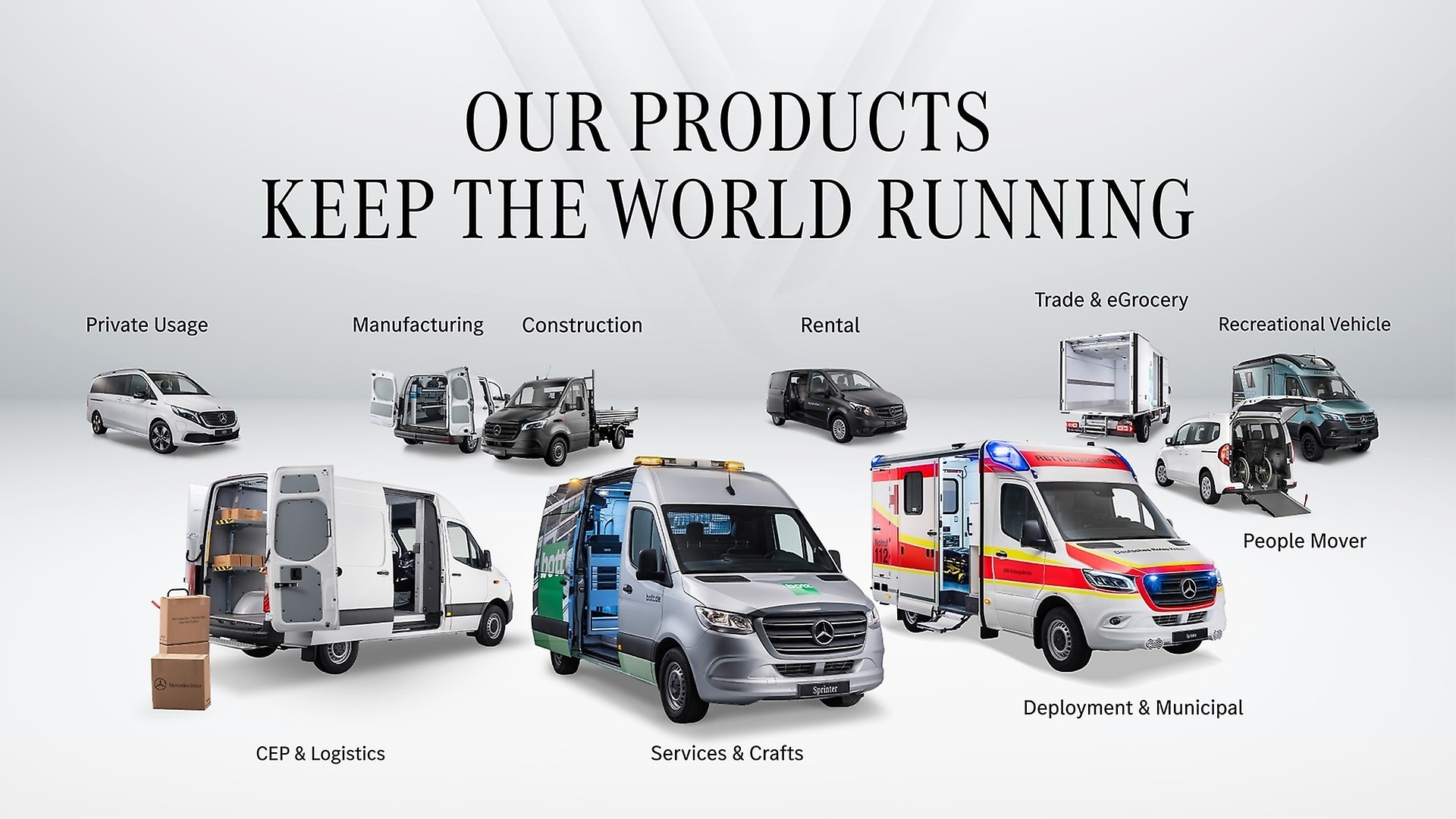


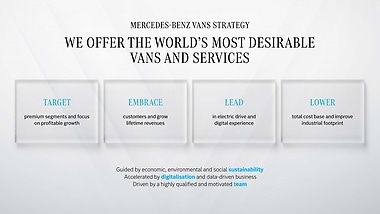
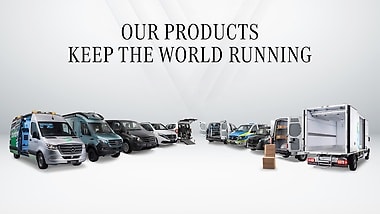
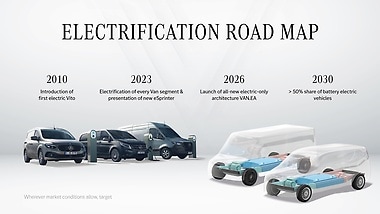
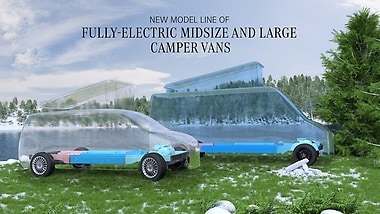


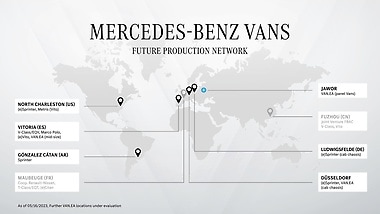
,xPosition=0.5,yPosition=0)